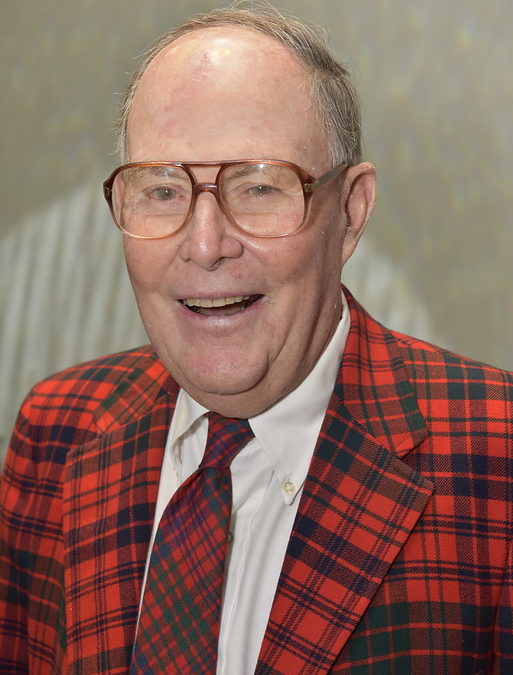Pete Dye, a Past President and Fellow of the American Society of Golf Course Architects (ASGCA) and 1995 Donald Ross Award recipient, died Jan. 9, 2020, at age 94. The patriarch of one of the most famous families in golf course design, ASGCA members will also remember Dye for his service to ASGCA and the game of golf.
Dye met his future wife, Alice, at Rollins College in Winter Park, Florida. The couple married in 1950 and moved to Indiana. According to a 2003 article by Ron Whitten in Golf Digest, Pete came home from work on a summer day in 1955 and said to Alice: “I’m tired of the insurance business. What I really want to do is build golf courses.”
Dye learned about golf course maintenance while chairman of the green committee at the Country Club of Indianapolis and gradually turned his interest in architecture into a profession, designing nine holes at El Dorado (now named Dye’s Walk Country Club), in Greenwood, Indiana, in 1959. Soon after, the Dyes designed their first 18-hole layout, at Maple Creek Golf and Country Club, also in Indianapolis.
“It’s hard to overstate the influence that Pete, along with Alice, had on the profession of golf course architecture,” said ASGCA President Jan Bel Jan. “Their designs were remarkable and advanced the profession, as did their mentoring of countless golf course architects. They were a major part of ASGCA for more than five decades and will be sorely missed.”
An elite amateur golfer, Dye played in the 1957 U.S. Open, where he finished ahead of future ASGCA contemporaries Jack Nicklaus and Arnold Palmer.
His commitment to golf course design was cemented after a tour of Scottish golf courses the Dyes undertook after Pete competed in the 1963 British Amateur. “Both Pete and I were champion golfers and played famous courses, which influenced our design features,” Alice said in a 2018 interview.
Over time, Dye became known for his unique designs that also included respect for the environment. His projects featured drainage, irrigation designs and wetland areas, which helped to recycle and purify water.
The list of legendary Pete Dye-designed courses in lengthy, and includes: Harbour Town Golf Links, Hilton Head, South Carolina; TPC Sawgrass-Stadium Course, Ponta Vedra, Florida; The Ocean Course, Kiawah Island, South Carolina; PGA West – Stadium Course, Palm Desert, California; Whistling Straits, Kohler, Wisconsin; and the Honors Course, Ooltewah, Tennessee.
Dye’s golf course legacy stretches far beyond the courses he designed. Many of golf’s leading course architects honed their craft while working alongside him, including Jack Nicklaus, ASGCA Fellow; Bill Coore, ASGCA; ASGCA Past President Lee Schmidt; Bobby Weed, ASGCA; Tim Liddy, ASGCA; Brian Curley, ASGCA; and Chris Lutzke, ASGCA.
Dye was recipient of countless awards during his career, including the Old Tom Morris Award from the Golf Course Superintendents Association of America and the Golf Writers Association of America’s William D. Richardson Award for outstanding contributions to golf.
Dye’s sons, P.B. Dye, ASGCA, and Perry Dye, ASGCA, have also gone on to develop their own golf course design portfolios. Many other members of the extended Dye family are now also involved in golf course architecture, including Pete’s niece, Cynthia Dye McGarey, ASGCA.
Dye became an ASGCA member in 1966, served as President from 1988-89 and achieved Fellow status in 2004. He is survived by sons and ASGCA members, P.B. and Perry.

